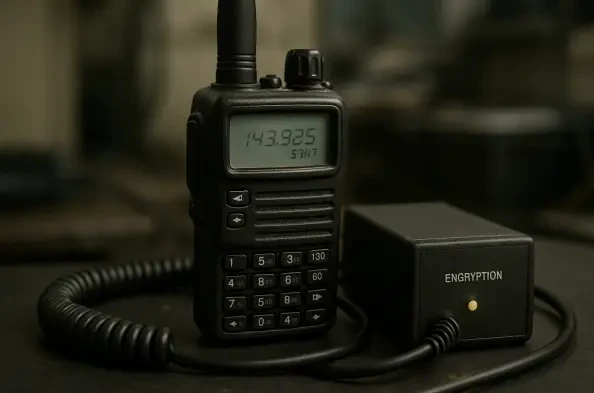What happens when the very tools meant to protect law enforcement become their greatest vulnerability? Picture a high-stakes operation where police officers rely on encrypted radio communications to coordinate a critical response, only to find their messages intercepted and manipulated by unseen adversaries. This chilling scenario is no longer just a hypothetical. Recent revelations about severe encryption flaws in TETRA radio systems, widely used by police and emergency services worldwide, have exposed a silent threat that could undermine public safety at its core. As cyber attackers grow bolder, the cracks in these systems demand urgent attention.
Why TETRA Is Crucial for Public Safety
TETRA, short for Terrestrial Trunked Radio, serves as a vital lifeline for law enforcement, military, and critical infrastructure across the globe. Designed as a European standard, this technology ensures secure voice and data exchanges through end-to-end encryption, supporting everything from routine patrols to emergency disaster responses. With millions of users depending on its reliability, TETRA has become synonymous with confidentiality in high-pressure environments where a single miscommunication can cost lives.
The significance of this system cannot be overstated. For police forces, it enables real-time coordination during complex operations, ensuring that sensitive plans remain shielded from prying ears. However, as cyber threats evolve, the integrity of TETRA stands as both a pillar of safety and a potential point of failure, especially when flaws in its design come to light. The stakes are unimaginably high when the backbone of critical communication faces risks of exploitation.
Digging Into the Cracks: The 2TETRA:2BURST Flaws
Cybersecurity researchers have recently uncovered a series of alarming vulnerabilities in TETRA’s encryption framework, collectively labeled 2TETRA:2BURST. These flaws, building on earlier discoveries from a few years ago, include risks such as replay attacks, where intercepted transmissions can be reused to deceive users, and brute-force decryption due to reduced key strength in certain setups. Additionally, packet injection vulnerabilities allow attackers to insert harmful data into encrypted networks, creating chaos.
Beyond the protocol itself, specific hardware like the Sepura SC20 series radios exhibits critical weaknesses. Defects in file management and inadequate encryption for storage cards enable unauthorized code execution with minimal physical access, potentially allowing attackers to plant persistent backdoors. These issues vary in impact, with data transmissions often more exposed than voice, but the potential for disrupted emergency responses remains a stark reality, as highlighted by documented research scenarios.
Hearing From the Experts on the Frontline
At a prominent cybersecurity conference, researchers from Midnight Blue delivered a sobering assessment of TETRA’s flaws, stating, “These vulnerabilities represent a real and immediate threat to the security of critical communications.” Their findings echo past concerns, including an intentional backdoor identified several years ago, pointing to deep-rooted design problems. Such warnings paint a troubling picture of systemic issues that go beyond isolated errors.
Contrasting perspectives add layers to the debate. The European Telecommunications Standards Institute (ETSI), which oversees TETRA’s standards, has clarified that end-to-end encryption falls outside its direct responsibility, leaving a gap in accountability. This disconnect frustrates experts who argue that without unified oversight, law enforcement agencies remain exposed to risks during missions where every second counts, amplifying the need for swift resolution.
Real-World Risks for Law Enforcement
The implications of these encryption flaws extend far beyond technical reports, striking at the heart of operational safety. Consider a scenario where a police unit responding to a hostage crisis relies on TETRA radios for strategy updates, only to have false instructions injected by an attacker. Such interference could lead to catastrophic missteps, endangering both officers and civilians.
Statistics underscore the scale of reliance on TETRA systems. Over 120 countries utilize this technology for public safety, with thousands of networks handling sensitive communications daily. While no widespread exploits have been confirmed in the wild, the mere possibility of interception or manipulation during critical moments serves as a wake-up call. Law enforcement agencies must grapple with the reality that their trusted tools could be turned against them by sophisticated adversaries.
Steps Toward Securing Critical Communications
Addressing these vulnerabilities requires immediate, practical action, especially since comprehensive patches for most flaws remain unavailable. Law enforcement agencies are urged to assess their current TETRA configurations and prioritize disabling weaker encryption algorithms, such as TEA1, which have been flagged as particularly vulnerable. Migrating to alternative encryption solutions offers another layer of defense, though implementation may pose logistical challenges.
Additional security measures can help bridge the gap. Employing tools like Transport Layer Security (TLS) or virtual private networks (VPNs) for data transmission can mitigate risks of interception. Regular audits of network setups and training for personnel on recognizing potential breaches also play a crucial role. These steps, tailored to the unique constraints of TETRA systems, aim to safeguard communications until long-term fixes emerge from ongoing research and collaboration.
Looking back, the journey to secure TETRA radio systems has proven to be a complex battle against evolving cyber threats. The exposure of the 2TETRA:2BURST vulnerabilities has underscored a critical need for vigilance and innovation in protecting law enforcement communications. Moving forward, the focus shifts to fostering collaboration between cybersecurity experts, standard bodies, and end-users to develop robust, lasting solutions. Strengthening accountability within the ecosystem and investing in next-generation encryption technologies emerge as essential priorities to ensure that public safety networks can withstand the challenges of tomorrow’s digital landscape.






